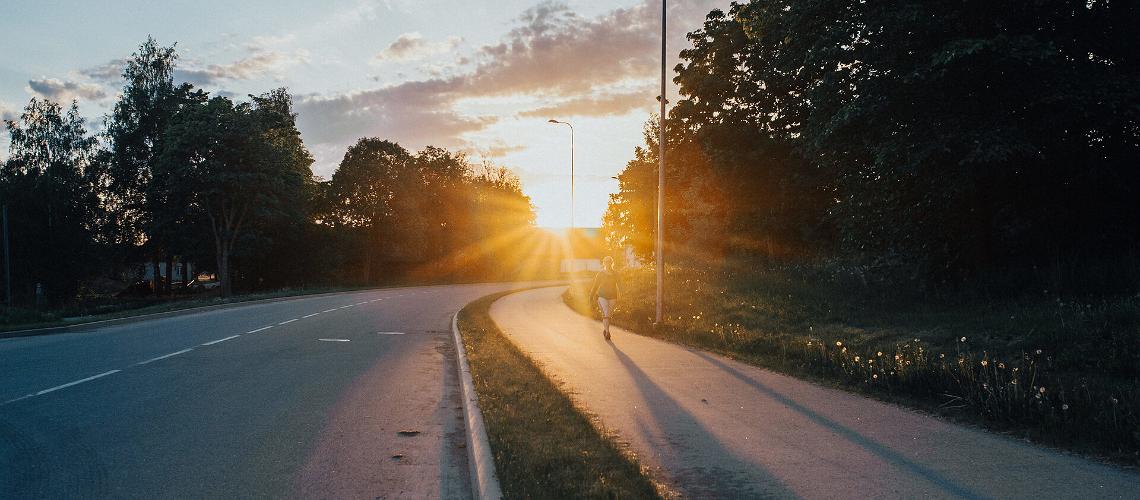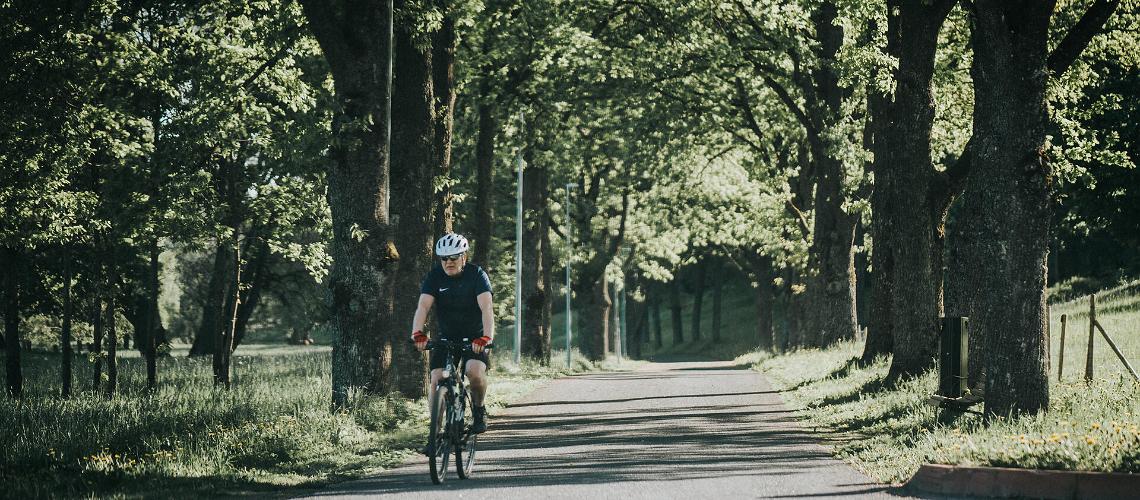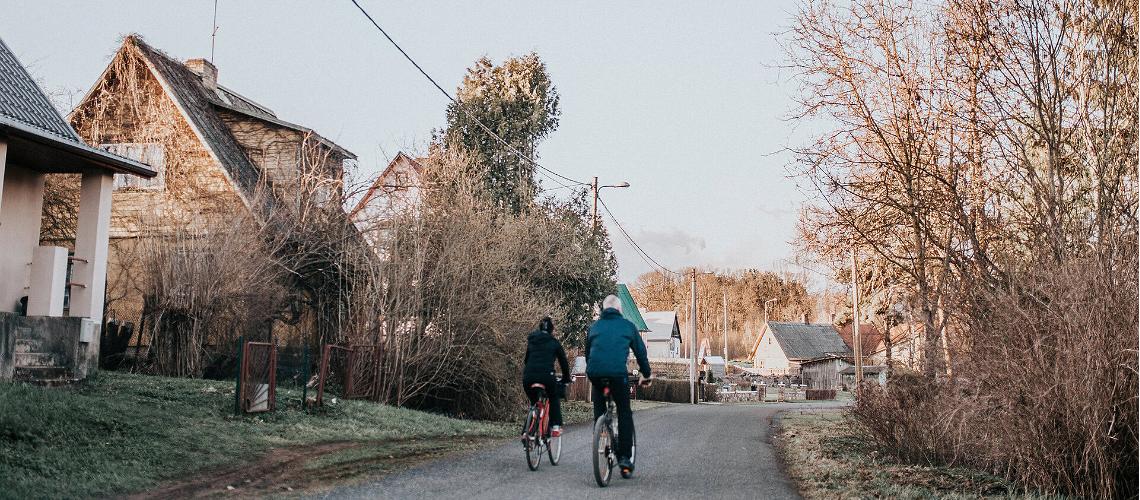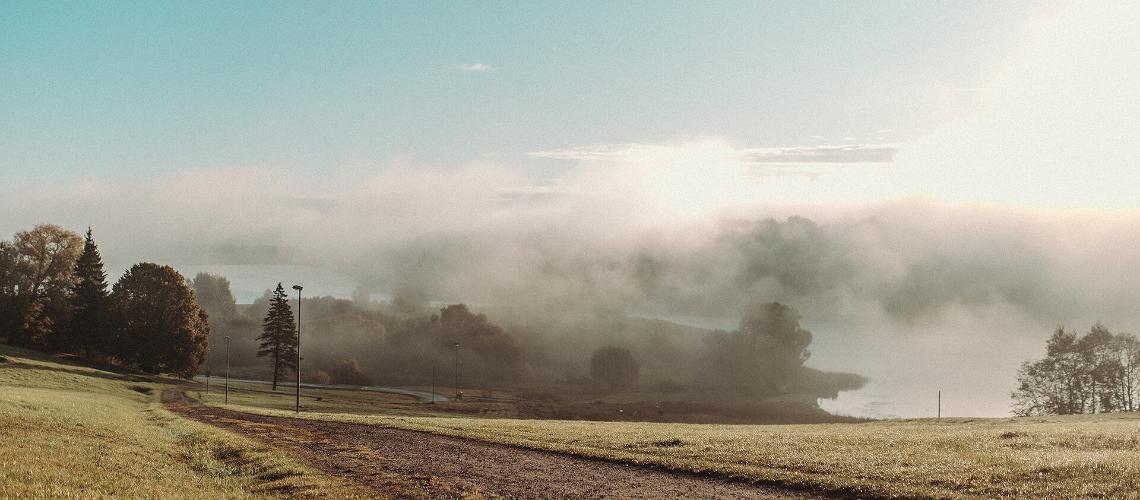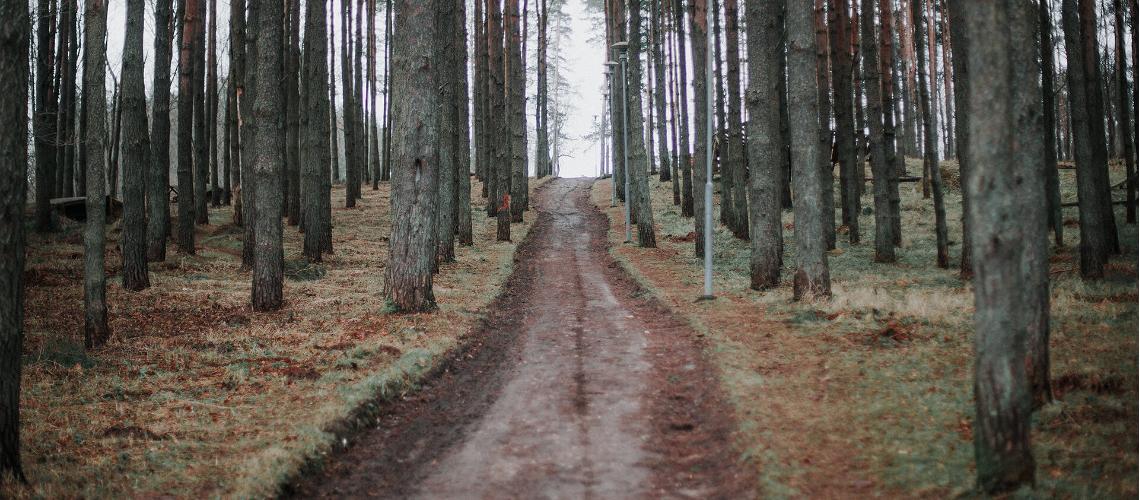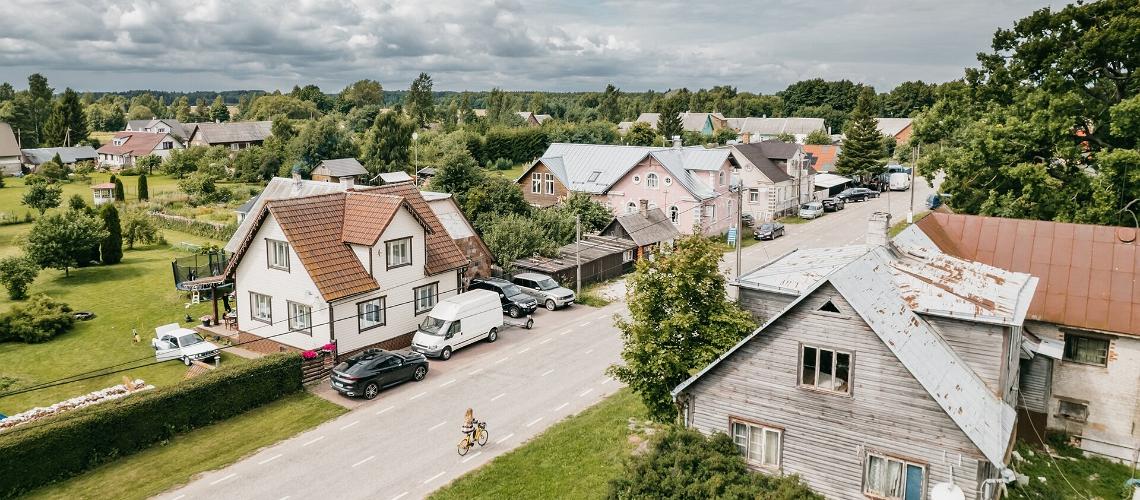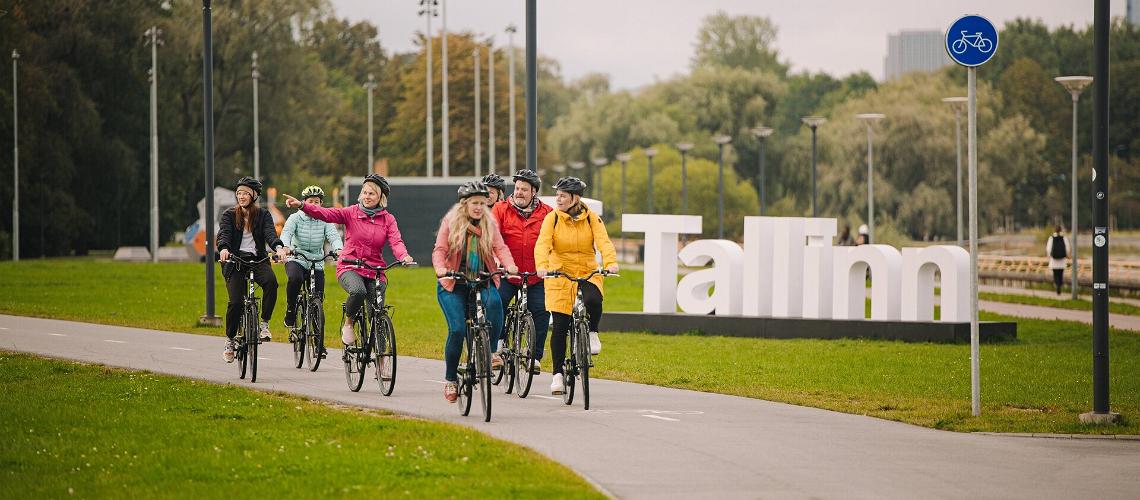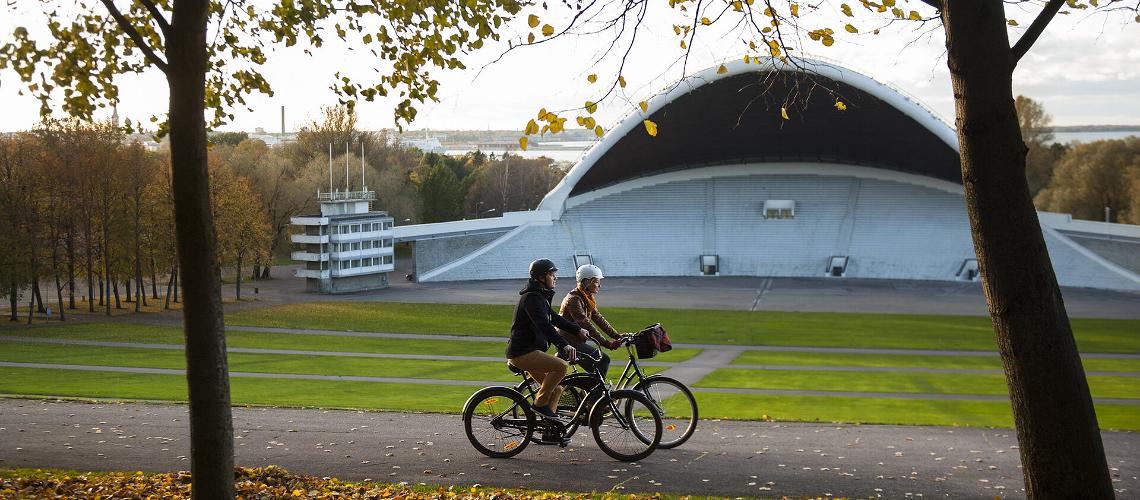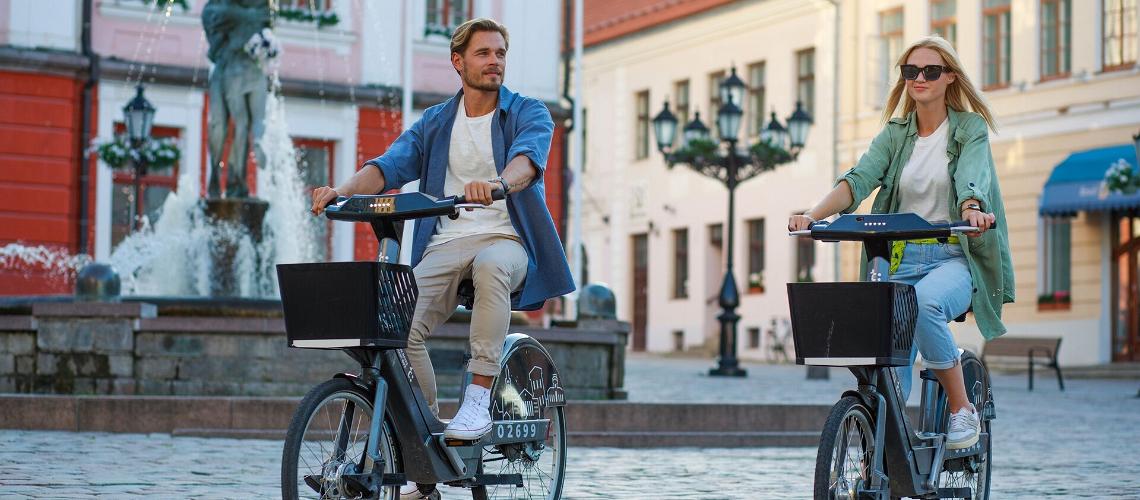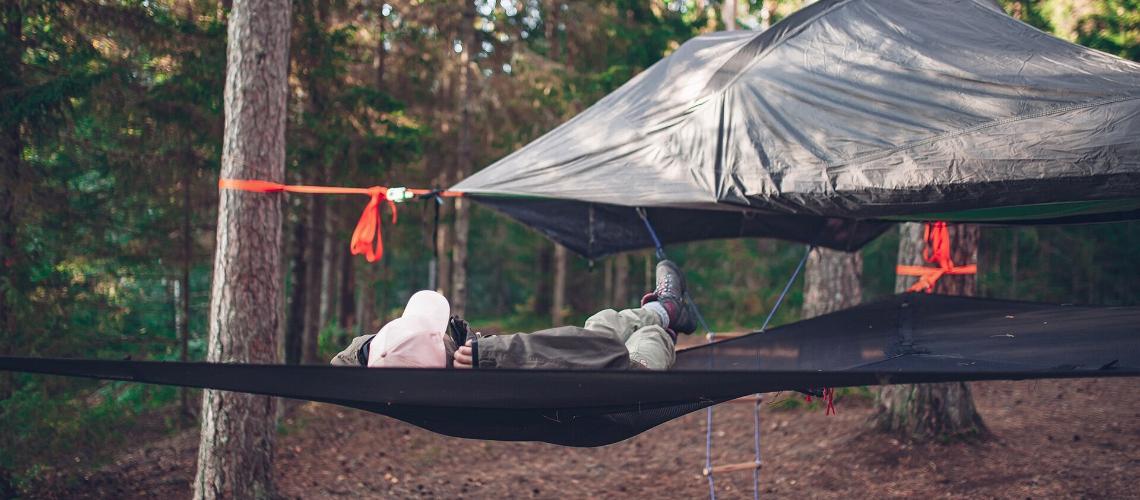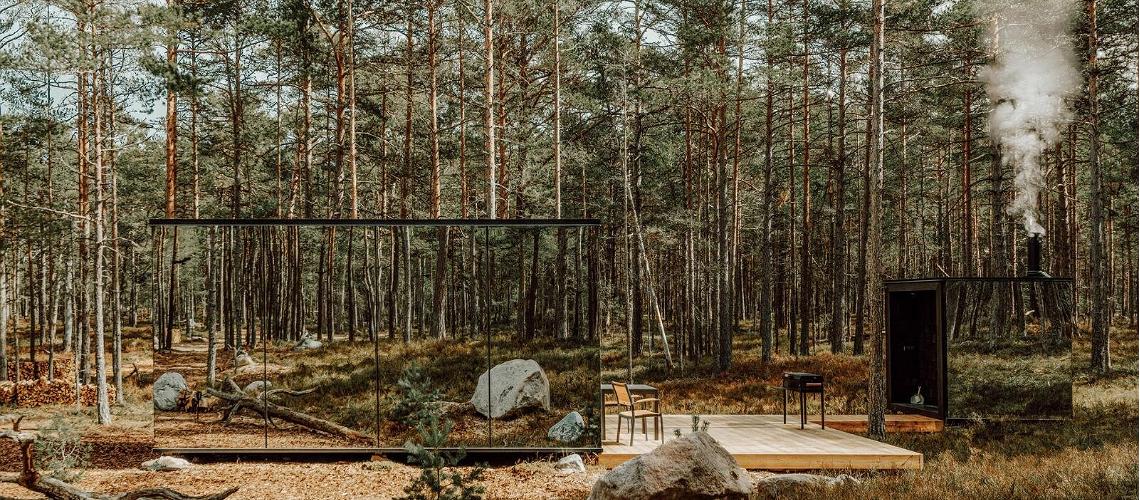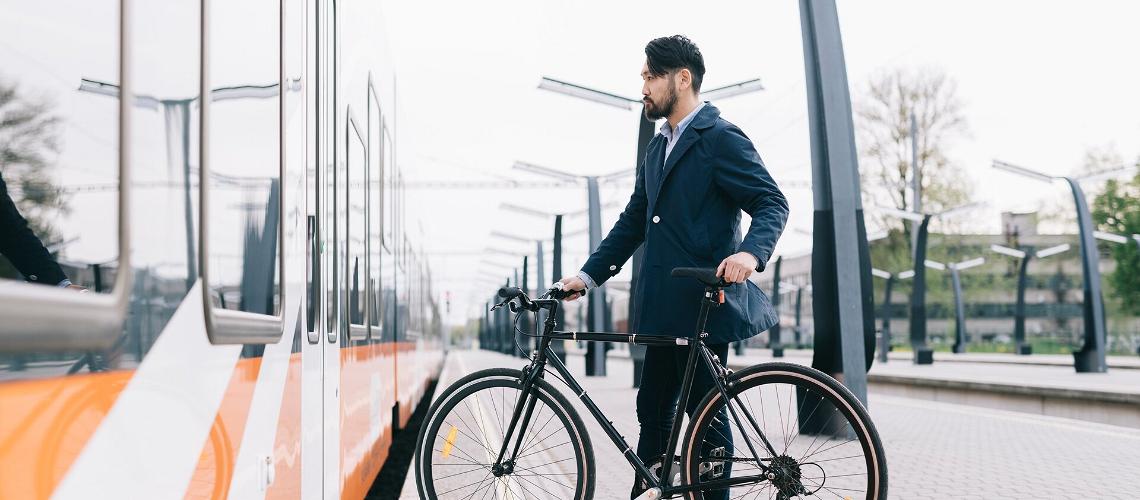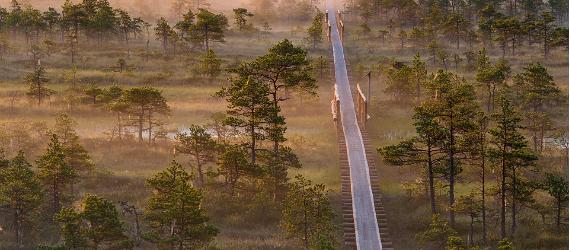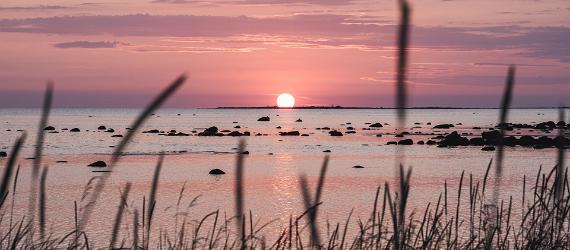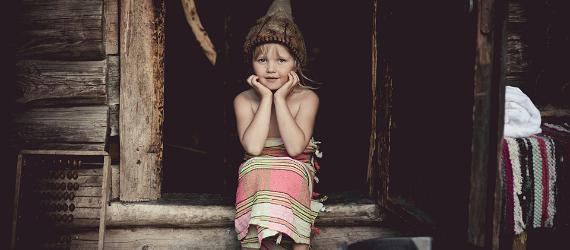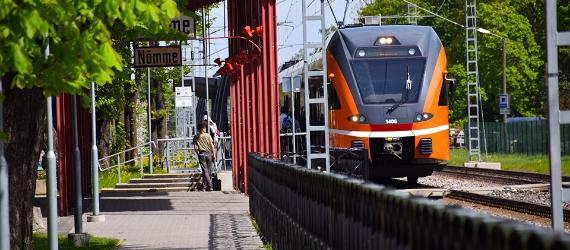Estonia is a great place for traveling by bike thanks to its compact size, peaceful scenery, and a well-developed network of roads and trails. There are hardly any annoying climbs to make you sweat — just cycle along and admire the view.
Bike rentals are available all around Estonia if you don't want to take your own on holiday. If you do plan to travel with your own wheels, then read on to the end of this article where we cover how to transport your bike in Estonia. There are rental stations almost everywhere in the country, including on the major islands.
Multi-day bikepacking trips in Estonia are a breeze, as there are campsites along most of the routes, or you can plan your trip around the country's many sustainable places to stay. Pick your route (we've outlined some of the best below) and head out on the open road!
Touring mainland Estonia by bike
Tallinn
You can get around Estonia's compact capital by bike. Biking may not be the preferred form of transport in Tallinn (yet), but improvements are being made every year to the city's network of bike paths. If you don't have your own bike, you can easily rent one or grab an electric bike using the Bolt app. (FYI: cycling Tallinn's Old Town is for ride-or-die bikers. The cobblestones make for a bumpy ride, so use your wheels to explore Kalamaja, Kadriorg, or other neighborhoods that are off the beaten —but on a smoother — path.)
There are a couple of long-distance bike rides that make for a delightful day in Tallinn.
- Tallinn—Viimsi: Head east from the center towards the Kadriorg district and then to the Pirita Promenade. Depending on your mood, you can add various sightseeing stops along the way, such as Kadriorg Park, the Russalka Memorial, the Estonian History Museum at Maarjamäe Palace, the Memorial to the Victims of Communism, and finally the Open Air Museum in Viimsi.
- Tallinn—Paljassaare: Bike west from the center and stay on the coast. On the way, there are several stops worth seeing: Noblessner, Pikakari Beach, and finally the trails of Paljassaare and their various bird-watching towers.
Tartu
The city of Tartu has installed an official bike rental system called Tartu Smart Bike with about 750 bicycles available at 69 rental stations. You can buy a daily, weekly, or annual ticket, and the electric bikes are connected to the entire public transit system.
South Estonia is an ideal region for bike tours. This area gives you get a wonderfully comprehensive overview of the Estonian landscape, and you may very well have the roads nearly all to yourself.
- The Selgise cycle path runs for about 25 kilometers and goes through the forest on a well-developed route. It is clearly signposted, and you'll find a cabin and fire pit along the way.
- The Tüki cycling trail follows the course of the Ilmatsalu River across meadows and fields, past fish ponds and through forest clearings. It also has various campfire spots, and you can go for a swim at the quarry pond. It's only 7 kilometers long and close to the city, so it's perfect for bikers who are looking for a quick ride.
More beautiful bike tours on the mainland
Anyone who knows Estonia knows that you can cycle almost everywhere, as there are relatively low volumes of traffic, even on major country roads. Plus, off-road trails offer adventurous mountain bikers more challenging terrain.
Ikla-Võiste-Pärnu
A great longer tour is the Ikla–Võiste–Pärnu cycling route. It takes about two days to do the entire route, but of course you can cover it in smaller parts. The route goes along the old highway from Riga to Pärnu. You'll pass numerous campsites and campfire spots, charming little fishing villages, and old churches. From Häädemeeste to Pärnu, the route goes along the Via Baltica, which does have quite a bit more traffic. If that doesn't bother you, the route is definitely worthwhile.
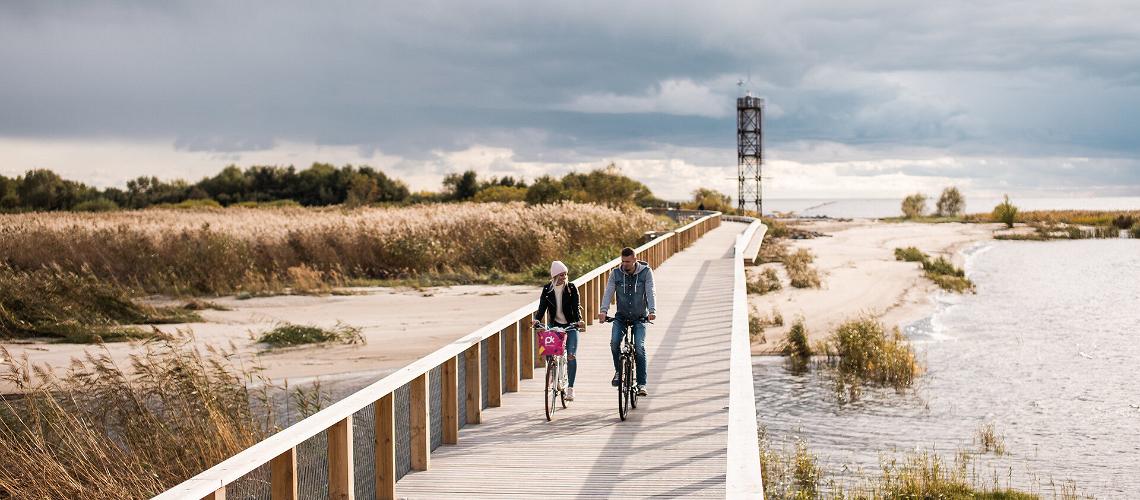
Pärnu makes a perfect starting point for exploring the Baltics by bike.
Photo by: Priidu Saart, Visit Pärnu
Offroad trails
There are two noteworthy cross-country trails in Estonia – the Oandu-Ikla trail, which covers 375 km North to South, and the 628-km-long Peraküla-Aegviidu-Ähijärve trail, which runs East to West. Both routes can be done with off-road bikes. These trails will lead you through primeval nature, tiny villages, and Estonia's infamous wetlands. There are plenty of campsites and cabins along the way.
Biking along the coastline
One of the most exciting bike routes in Europe, the EuroVelo 10, runs along Estonia's extensive coastline. The 981-km route starts in the south, passes Pärnu, the larger islands, Tallinn and then through Lahemaa National Park, finally ending at the Russian border.
Bikepacking on Estonia's islands
Estonia's islands are not densely inhabited, and only about ten islands have permanent residents. The islands are known for their windswept, sandy beaches, stony outcrops, and historical sites that go back centuries. Estonian islands are the perfect bikepacking destination for those seeking peace and seclusion. You can cover dozens of kilometers of beach trails without coming across a single soul, making for a welcome respite from hectic city life.
Muhu
If you want to go to Saaremaa, you have to go through Muhu. In the very east of the small island is the ferry port of Kuivastu, which connects Muhu with the mainland. The island can be conquered by bike in about two days. A complete island tour covers about 80 kilometers. On the way you'll see picturesque fishing villages, windmills, country houses and lots of wild nature — including moose and roe deer.
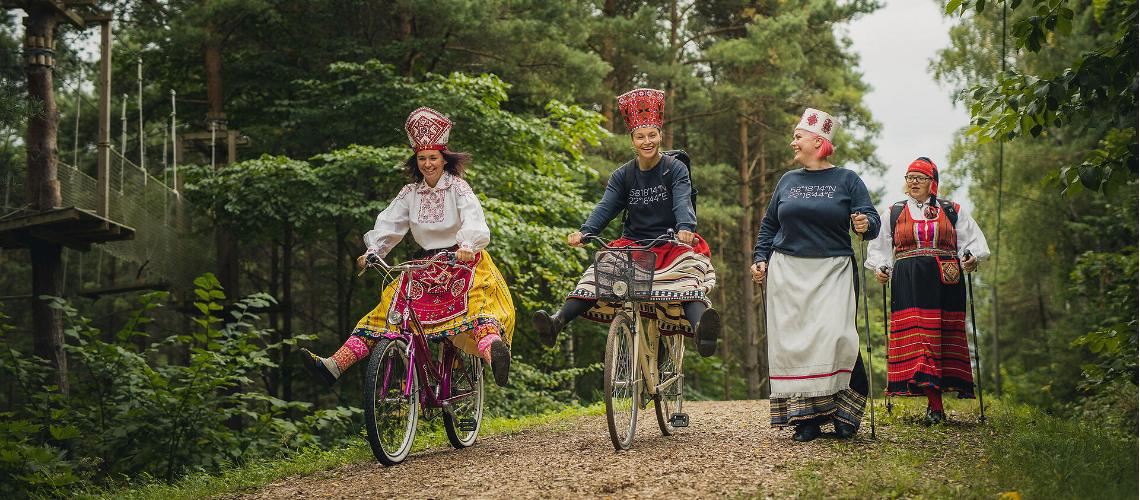
A bikepacking trip on Saaremaa can give you a taste of Estonia's nature and culture!
Photo by: Valmar Voolaid, Visit Saaremaa
Saaremaa
The capital of Estonia's largest island is Kuressaare, home to a medieval castle complex, spas, and delicious restaurants. The island has so many spa hotels that it's been nicknamed "SPA-remaa." Saaremaa has a wonderful Baltic Sea island flair — long beaches, sand dunes and squat, gnarled coniferous trees.
- Kihelkonna-Leisi: The complete tour from Kihelkonna to Leisi covers over 65 kilometers and can be easily managed in two days, including stops at various sightseeing spots. Highlights include the Mihkli Farm Museum and Tagamõisa Peninsula.
Hiiumaa
Hiiumaa is Estonia's unofficial cycling island. With hardly any larger towns and lots of wilderness, you can relax and breathe in the fresh air. The entire island is accessible by bike and there are loads of great routes with rest stops and sightseeing spots:
- Bike tour on the Tahkuna Peninsula: This route is a decent day trip. Easy paths alternate with quiet country roads. Sightseeing highlights along the route include the Military Museum and Tahkuna Lighthouse.
- Heltermaa-Suuremõisa-Hellamaa-Kärdla: Take a whole day for this ride. The Suuremõisa manor house with its inviting park deserves at least an hour's attention. Other stops, such as the port of Suursadam, will give you some insight into the history of Hiiumaa.
- Luidja-Kõrgessaare-Kärdla: At 29 kilometers, the tour from Luidja to Kärdla is quite a bit shorter. It's still good to take your time because Luidja Beach, the route's starting point, is lovely. Orchid lovers will want to linger at the Kõrgessaare orchids' study bed, especially around Midsummer when many of the orchids are in bloom.
- Kaina-Kassari: In the southern part of Hiiumaa, there is a 30-km-long route between Käina and Kassari. Climb the observation tower at Orjaku to watch for birds and check out the island's fascinating biodiversity. Plus, the harbor in town has a cafe to stop for a drink and a bite to eat.
- Sõru-Emmaste-Kõpu: Last but not least, is the longest of the suggested rides — 60 kilometers but worth every centimeter. Churches, including the lovely wooden Mänspäe Chapel, and lighthouses are the highlights of this route. In Ristna, stop at one of Estonia's quirkiest museums — the Museum of Sea Garbage. Not only can you see what has washed ashore, you can also purchase bits and bobs made from the flotsam.
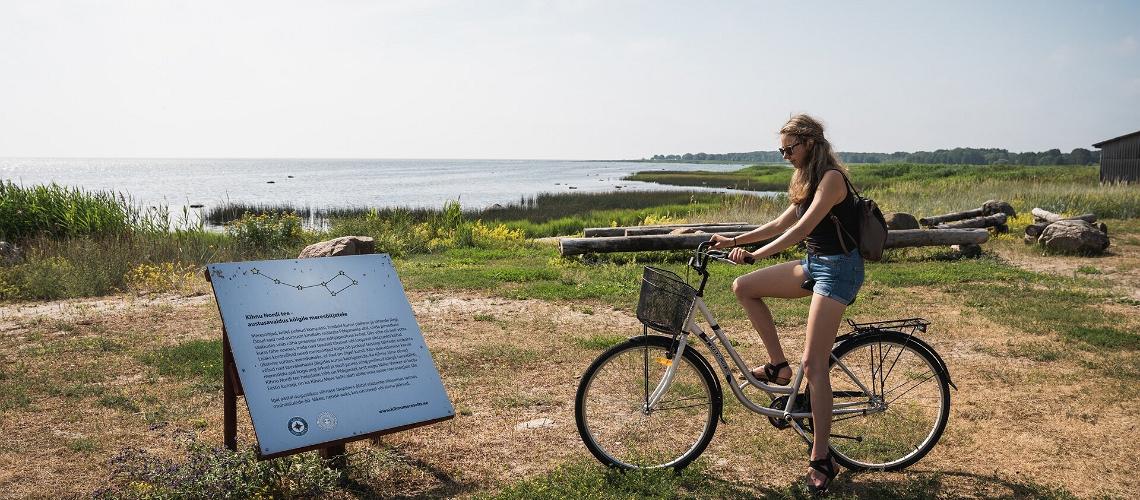
Kihnu has a self-guided tour called the Travel Wheel already marked for bikers.
Photo by: Priidu Saart
Kihnu
Kihnu is known for three things: colorful skirts, fish, and two-wheeled transportation. While the old Soviet motorcycles may now be few and far between, bicycles have become the new favorite way to get around the island. The Kihnu Travel Wheel is a route designed by the islanders to cover all the must-see spots on the island in a circular route. Some of the highlights include the museum and lighthouse. The island may be small, but take your time — an overnight stay will give you a glimpse of the island's UNESCO-listed culture.
Vormsi
Around 350 people live on Vormsi, spread out in 14 different villages. Take two days to complete the 55-kilometer tour around the island. The tour starts at the pretty island port of Sviby, where you can also rent bicycles. If you need a break from your wheels, then try out the sails at the boat rental or stop at the café with a view of the sea. The route leads through the island's villages, offers a visit to the farm museum and of course the lighthouse is also on the plan.
Where to sleep when bikepacking in Estonia
You have two options for overnight accomodations if you're traveling by bike.
- Camping: Pack along your tent and sleeping and spend the night along the trail at one of the many free RMK-managed campsites around Estonia. For more details on camping, read our guide to camping Estonia.
- Treehouses, mirrored cabins, and farmhouses: Estonians love to leave the city and spend a night in nature without giving up the comforts of home. Many of these options make for unique experiences in and of themselves. Here's our list of the top 20 sustainable accomodation options in Estonia.
Transporting your bike in Estonia
- By train: On each train, there's a compartment marked for bicycles. You can check domestic train routes, ticket information, and schedules on the Elron website. Each departure on the website includes a bike symbol in either green, grey, or red indicating the availability of bike places on the train.
- Public transport in Tallinn: If your bike isn't foldable or packed in a cardboard box, you cannot bring it on Tallinn public transport. If you try to board with a bike, drivers will likely tell you that bikes are dirty and buses, trams, and trolleys are only for people.
- Intercity buses: In general, long-haul buses are required to take up to two bicycles if they have space in their luggage compartment. The best way to ensure your bike makes it on board is to clean it, remove the front wheel and wrap it in a cover. Arrive 15 to 20 minutes before the scheduled departure time to make sure there is space for your bike. Lux Express also offers a free bicycle ticket, and up to five bicycles can be booked for each trip.
- To the islands: Ferryboats operate between mainland Estonia and nearby islands. The most popular routes are to and from Saaremaa and Hiiumaa and in-between the two. Buy your ticket ahead of time online. The best ticket is the combination bike plus passenger option. When boarding, ride over to the employee checking-in cars, show your ticket, and ride onto the ferry; you don't need to queue with the cars. The crew will direct you to a parking spot for your bike. Bags can remain on your bike during the journey.
- Cargo service: If you have a bit more time and are planning to travel to smaller places in Estonia, you can use Cargobus to transport your bike. Cargobus transports all kinds of items in long-haul buses. Packages are usually sent on the same day and can be collected from the local office (typically located inside the bus stations). Packing your bike in a box is not necessary — all you need to do is turn the handlebar sideways and sometimes wrap the bike in plastic if asked.
- City Bike courier service: Want to rent a bike in Tallinn and ride it to another city without having to return to Tallinn? You can do just that with an offer from City Bike. Ride a bike to Kuressaare, Pärnu, Haapsalu, Narva, Tartu, and even Riga or Vilnius, leave the bike in a secure place like a hotel or hostel and a courier will pick it up from there.















